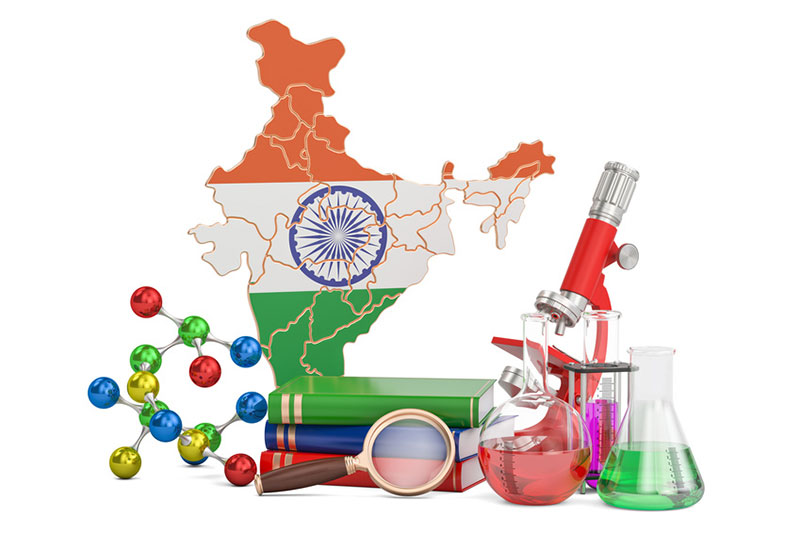News: Recently, the Indian Space Research Organisation (ISRO) launched a new-generation meteorological satellite, INSAT-3DS
Q1. The Indian Space Research Organization (ISRO) recently launched the INSAT-3DS satellite, which was a major accomplishment for both the spacecraft, and the GSLV (Geosynchronous Satellite Launch Vehicle) rocket. In the light of the statement, discuss the significance and challenges of it.
In spite of its earlier setbacks, GSLV was able to get the satellite into the desired orbit, marking a significant victory for ISRO. The GSLV rocket, a vital component of ISRO’s launch fleet, has earned the nickname ‘naughty boy’ due to its track record, characterized by a high failure rate compared to its counterparts. The recent success, however, has shifted the narrative around GSLV.
Comparison with PSLV & LVM3:
GSLV had flown 15 times before this, and four of these had been unsuccessful, a very high failure rate for any rocket. PSLV, the rocket that ISRO has used the maximum number of times, has failed only twice in its 60 launches, including the first time it was tried way back in 1993. The LVM3 rocket has flown seven times and never failed.
Cryogenic Engine and its challenges:
- The main source of GSLV’s difficulties is its cryogenic engine, which is housed in the rocket’s third and last stage.
- Cryogenic engines use liquid hydrogen as the main fuel. Hydrogen, the most efficient rocket fuel, is very difficult to handle in its natural gaseous form, but manageable in liquid state.
- However, it liquefies only at very low temperatures, nearly 250 degrees Celsius below zero. The oxygen that is needed to burn this fuel also needs to be in liquid form. Oxygen is in a liquid state at about 90 degrees Celsius below zero.
- Liquid hydrogen, which is efficient as a rocket fuel and needs to be handled at very low temperatures, is used in this engine.
Indigenous Cryogenic Technology:
- The GSLV uses a cryogenic engine that is reverse-engineered on a Russian design. The Russians had won a deal to supply cryogenic engines, and technology, to ISRO in the late 1980s, but that deal had come under pressure from the United States which claimed that it violated provisions of Missile Technology Control Regime, an international legal framework meant to stop the proliferation of missile technology.
- This engine has an entirely Indian design, developed within ISRO, and uses a different process to burn the fuel. It is closer to the designs of the Arianne rockets that were used by ISRO till a few years ago to launch its heavier satellites.
- This indigenously developed cryogenic engine is deployed in LVM3, ISRO’s most powerful rocket so far, which carried the Chandrayaan-2 and Chandrayaan-3 missions, among others. LVM3 has had seven flights till now, without any trouble. ISRO scientists, not surprisingly, have a much better grip on this home-grown technology.
- However the recent successful launch has put away the question marks on the GSLV rocket for the time being, but a more crucial test awaits it in a few weeks’ time when it gets ready to carry the NISAR (NASA-ISRO Synthetic Aperture Radar) satellite.
About INSAT-3DS:
- INSAT-3DS is an exclusive meteorological satellite made by ISRO.
- Its primary objective is to provide continuity of services to the existing in-orbit INSAT-3D and 3DR satellites and significantly enhancing the capabilities of INSAT system is flagged off to SDSC-SHAR launch port on January 25, 2024 for the launch on-board GSLV F14.
- The Satellite had successfully completed Satellite Assembly, Integration & Testing activities at U R Rao Satellite Centre, Bengaluru.
- Pre-Shipment Review (PSR) was held with the participation of members from the user community on January 25, 2024.
- The satellite is a user funded project with the Ministry of Earth Science (MoES), configured around ISRO’s well proven I-2k bus platform with a Lift-Off Mass of 2275 kg. Indian Industries have significantly contributed in the making of the Satellite.
About NISAR:
- NISAR, a first of its kind collaboration between ISRO and NASA, would be the most prestigious mission for the GSLV so far.
- NISAR has been built by space agencies of the US and India under a partnership agreement signed in 2014. The 2,800 kilograms satellite consists of both L-band and S-band synthetic aperture radar (SAR) instruments, which makes it a dual-frequency imaging radar satellite.
- While NASA has provided the L-band radar, GPS, a high-capacity solid-state recorder to store data, and a payload data subsystem, ISRO has provided the S-band radar, the GSLV launch system and spacecraft.
- According to NASA, another important component of the satellite is its large 39-foot stationary antenna reflector. Made of a gold-plated wire mesh, the reflector will be used to focus “the radar signals emitted and received by the upward-facing feed on the instrument structure”.
The story of GSLV has developed over time, demonstrating ISRO’s perseverance and dedication to developing rocket technology. Having overcome obstacles and completed successful missions despite being called the “naughty boy,” GSLV is a tribute to India’s prowess in space exploration. GSLV’s voyage represents the successes and lessons learned in the ever-evolving field of space exploration as it gets ready for the momentous NISAR mission.
Reference: https://indianexpress.com/article/explained/explained-sci-tech/gslv-rocket-naughty-boy-why-9166963/

